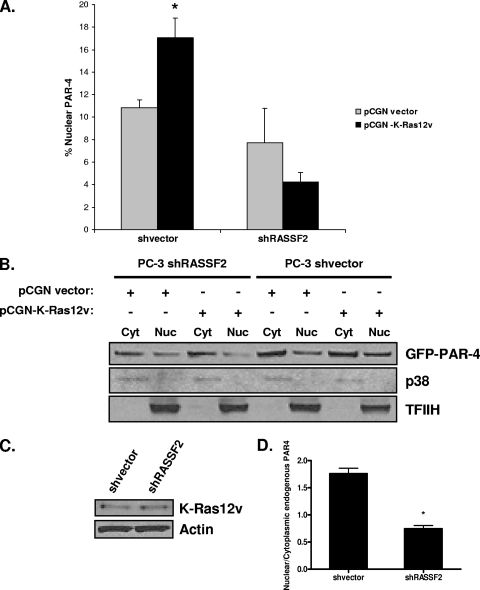FIG. 7.
Loss of RASSF2 reduces activated K-Ras-induced PAR-4 nuclear translocation. (A) PC-3 cells stably knocked down for RASSF2 and control cells were transfected with GFP-PAR-4 in the presence or absence of activated K-Ras. At 16 h posttransfection, cells were lysed and nuclear (Nuc) and cytoplasmic (Cyt) fractions were prepared and analyzed by Western blotting for GFP-PAR-4. The percentage of nuclear PAR-4 was quantitated by densitometry. Bars show means of duplicate experiments, and standard deviations are indicated. *, P < 0.05 compared to cells transfected with pCGN-vector. (B) Representative Western blots of the nuclear and cytoplasmic lysates. TFIIH and p38 were used as markers for the nuclear and cytoplasmic fractions, respectively. (C) Western blot analysis of the lysates using an anti-Ras antibody. Actin was used as a loading control. (D) The effects of activated K-Ras on endogenous PAR-4 localization were examined in the RASSF2-positive and -negative matched pair of PC-3 cells. Quantification of Western blot assay results was used to generate the ratio of nuclear versus cytoplasmic PAR-4 in Ras compared to vector-transfected cells for the matched pair. Data are means ± standard deviations of duplicate experiments. *, P < 0.01 compared to shVector-transfected cells.

